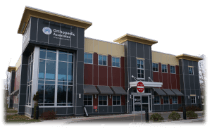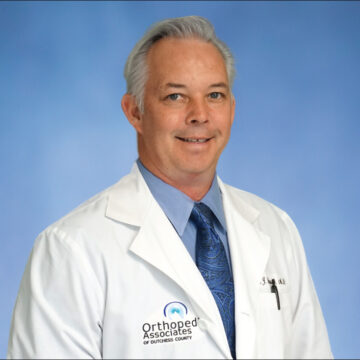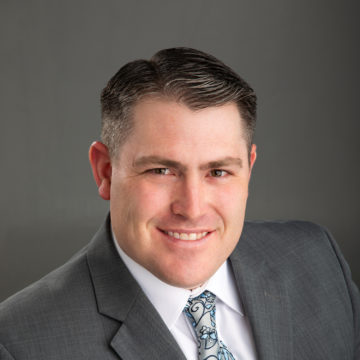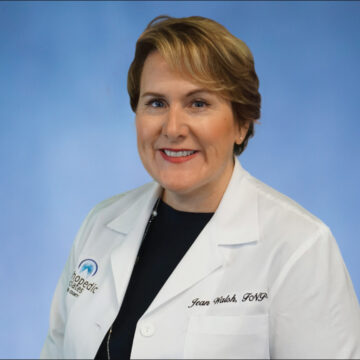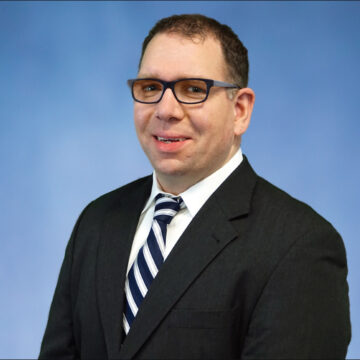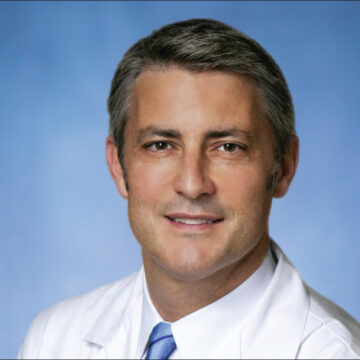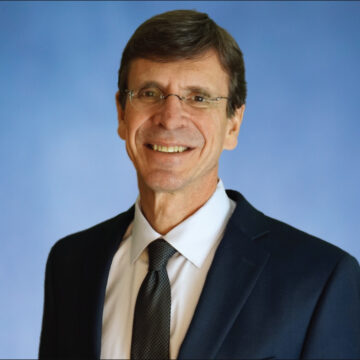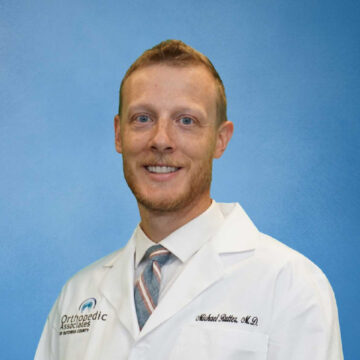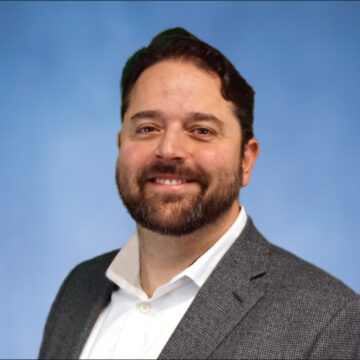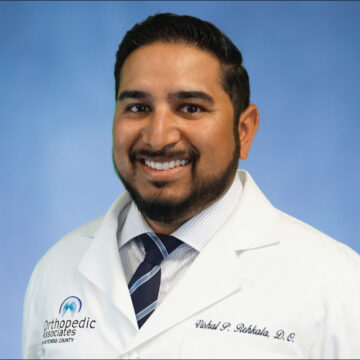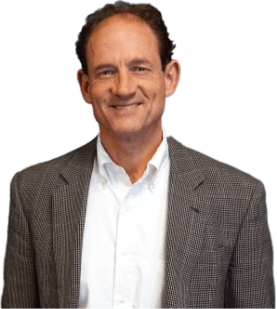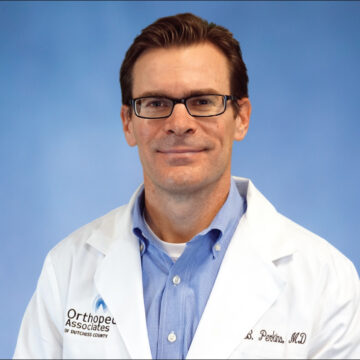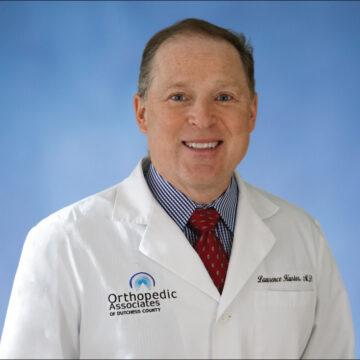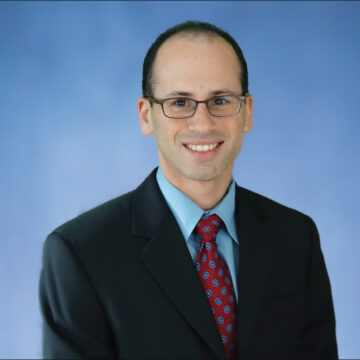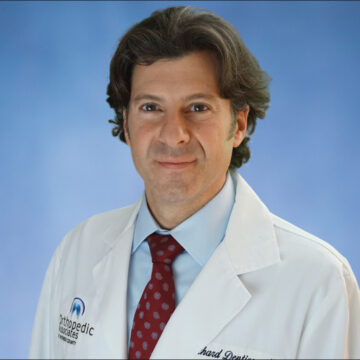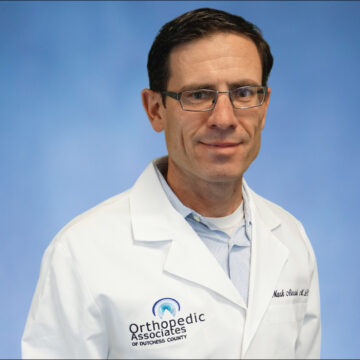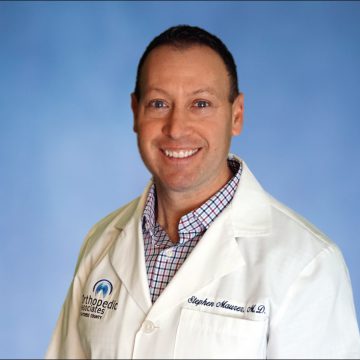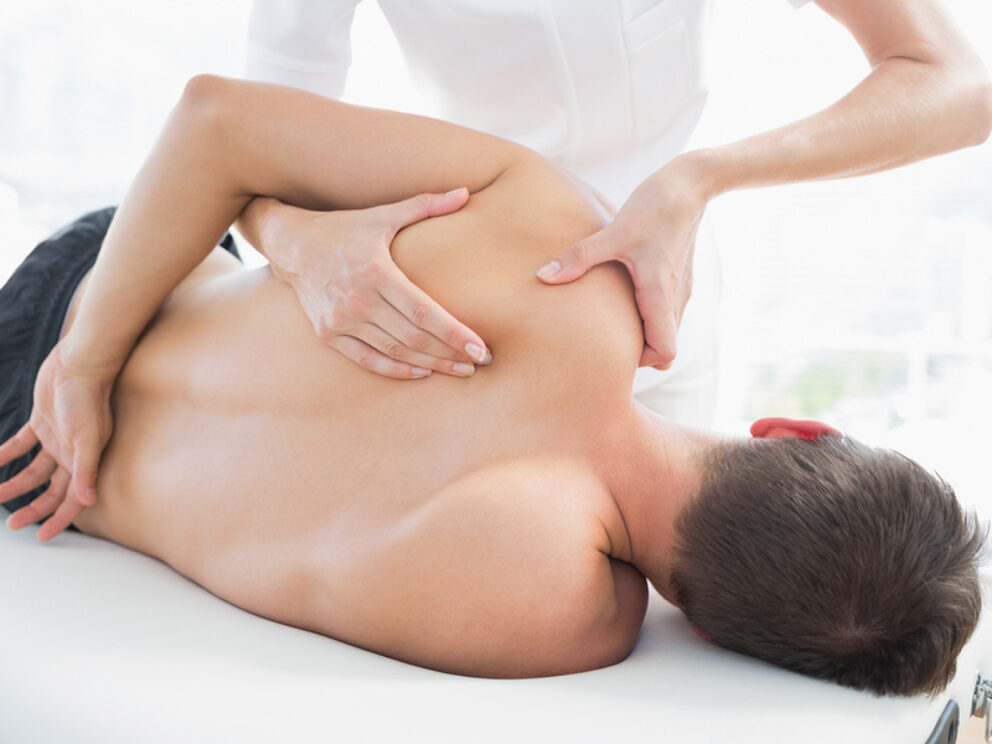
Services
Shoulder
As the most movable joint in the body, the shoulder can be subject to any number of injuries or issues. These can include shoulder dislocation or separation, rotator cuff tears, arthritis or bursitis. Orthopedic Associates of Dutchess County’s team of physicians brings advanced training in diagnosing and treating these conditions.
Orthopedic Associates of Dutchess County’s staff has far-reaching expertise in treating everything from soreness caused by sports activities to the chronic pain of rotator cuff injury or shoulder arthritis. Utilizing a team approach with our pain management, physical therapy and diagnostic staff, our specialty-trained physicians can quickly diagnose the cause of a patient’s pain and establish a course of treatment that meets their individual needs and goals.
Should conservative treatment options fail, our fellowship-trained surgeons have extensive experience in shoulder replacement (arthroplasty) surgery. Like better known hip or knee replacement surgery, shoulder replacement is a viable option for many patients suffering from severe arthritis or other degenerative conditions.
Meet our
WARNING SIGNS OF A SHOULDER INJURY
If you are experiencing pain in your shoulder, ask yourself these questions:
- Is your shoulder stiff?
- Can you rotate your arm in all the normal positions?
- Does it feel like your shoulder could pop out or slide out of the socket?
- Do you lack the strength in your shoulder to carry out your daily activities?
Conditions
Bursitis or tendinitis can occur with overuse from repetitive activities, such as swimming, painting, or weight lifting. These activities cause rubbing or squeezing (impingement) of the rotator cuff under the acromion and in the acromioclavicular joint. Initially, these problems are treated by modifying the activity which causes the symptoms of pain and with a rehabilitation program for the shoulder.
The conservative nonsurgical treatment is modification of activity, light exercise, MLS Laser therapy and, occasionally, a cortisone injection. Nonsurgical treatment is successful in a majority of cases. If it is not successful, surgery often is needed to remove the spurs on the underside of the acromion and to repair the rotator cuff.
If pain continues, surgery may be needed to repair full- thickness rotator cuff tears. Arthroscopic techniques allow shaving of spurs, evaluation of the rotator cuff, and repair of some tears.
Both techniques require extensive rehabilitation to restore the function of the shoulder.
The two basic forms of shoulder instability are subluxations and dislocations. A subluxation is a partial or incomplete dislocation. If the shoulder is partially out of the shoulder socket, it eventually may dislocate. Even a minor injury may push the arm bone out of its socket. A dislocation is when the head of the arm bone slips out of the shoulder socket. Some patients have chronic instability. Shoulder dislocations may occur repeatedly.
Patients with repeat dislocation usually require surgery. Open surgical repair may require a short stay in the hospital. Arthroscopic surgical repair is often done on an outpatient basis. Following either procedure, extensive rehabilitation, often including physical therapy, is necessary for healing.
A fractured collarbone and acromioclavicular separation are common injuries of children and others who fall on the side of their shoulder when playing. Most of these injuries are treated non-surgically with slings or splints. Severe displaced fractures or acromioclavicular joint separation may require surgical repair.
A fractured head of the humerus is a common result of falls on an outstretched arm, particularly by older people with osteoporosis. If fragmented or displaced, it may require open surgical repair and possibly replacement with an artificial joint (prosthesis).
Conditions
Shoulder replacement is recommended for patients with painful shoulders and limited motion. The treatment options are either replacement of the head of the bone or replacement of the entire socket. Your orthopaedic surgeon will discuss with you the best option.
A patient with a very large, long-standing rotator cuff tear may develop cuff tear arthropathy. In this condition, the changes in the shoulder joint due to the rotator cuff tear may lead to arthritis and destruction of the joint cartilage.
Avascular necrosis is a painful condition that occurs when the blood supply to the bone is disrupted. Because bone cells die without a blood supply, osteonecrosis can ultimately cause destruction of the shoulder joint and lead to arthritis. Chronic steroid use, deep sea diving, severe fracture of the shoulder, sickle cell disease, and heavy alcohol use are risk factors for avascular necrosis.
A severe fracture of the shoulder is another common reason people have shoulder replacements. When the head of the upper arm bone is shattered, it may be very difficult for a doctor to put the pieces of bone back in place. In addition, the blood supply to the bone pieces can be interrupted. In this case, shoulder replacement surgery may be recommended. Older patients with osteoporosis are most at risk for severe shoulder fractures.



